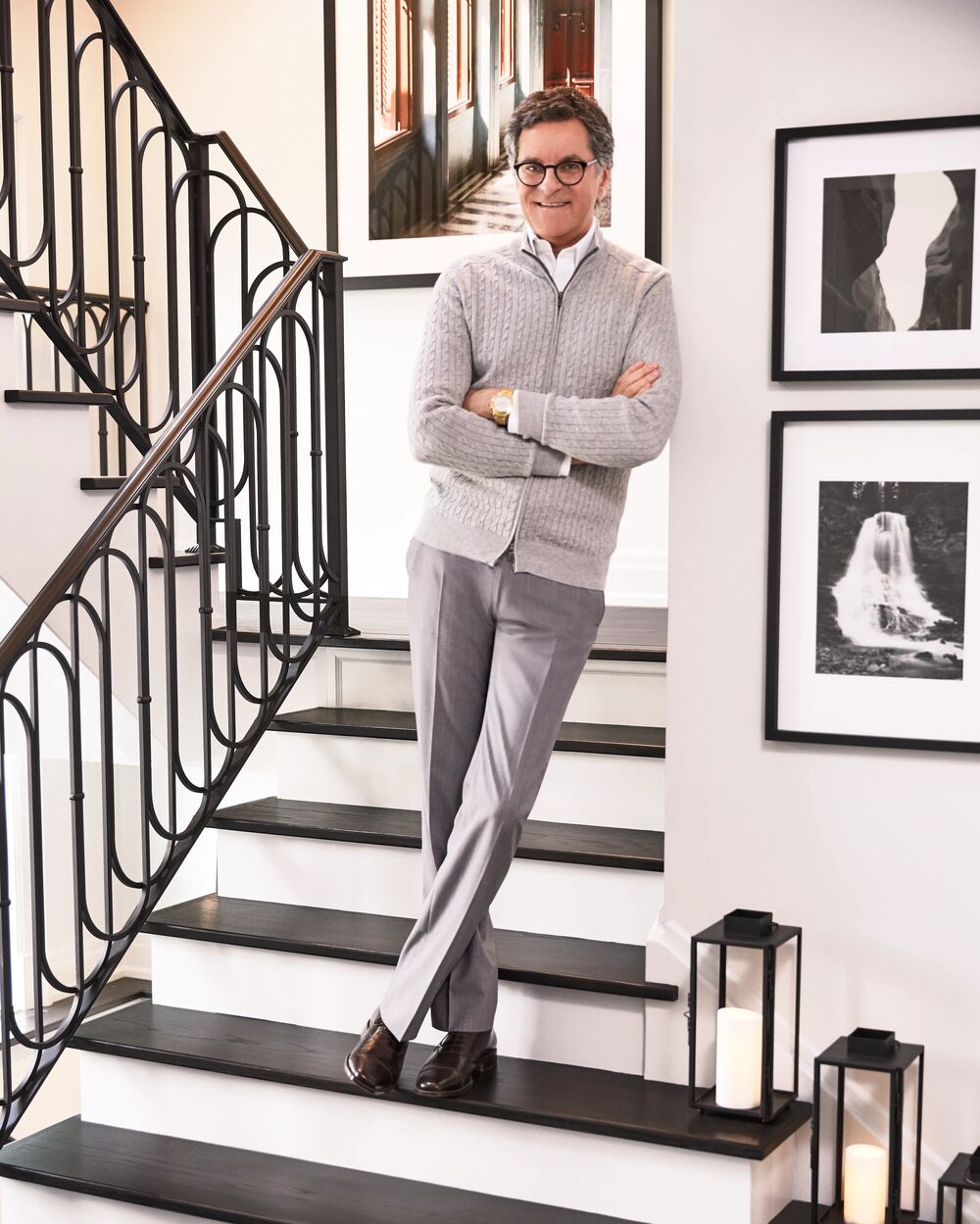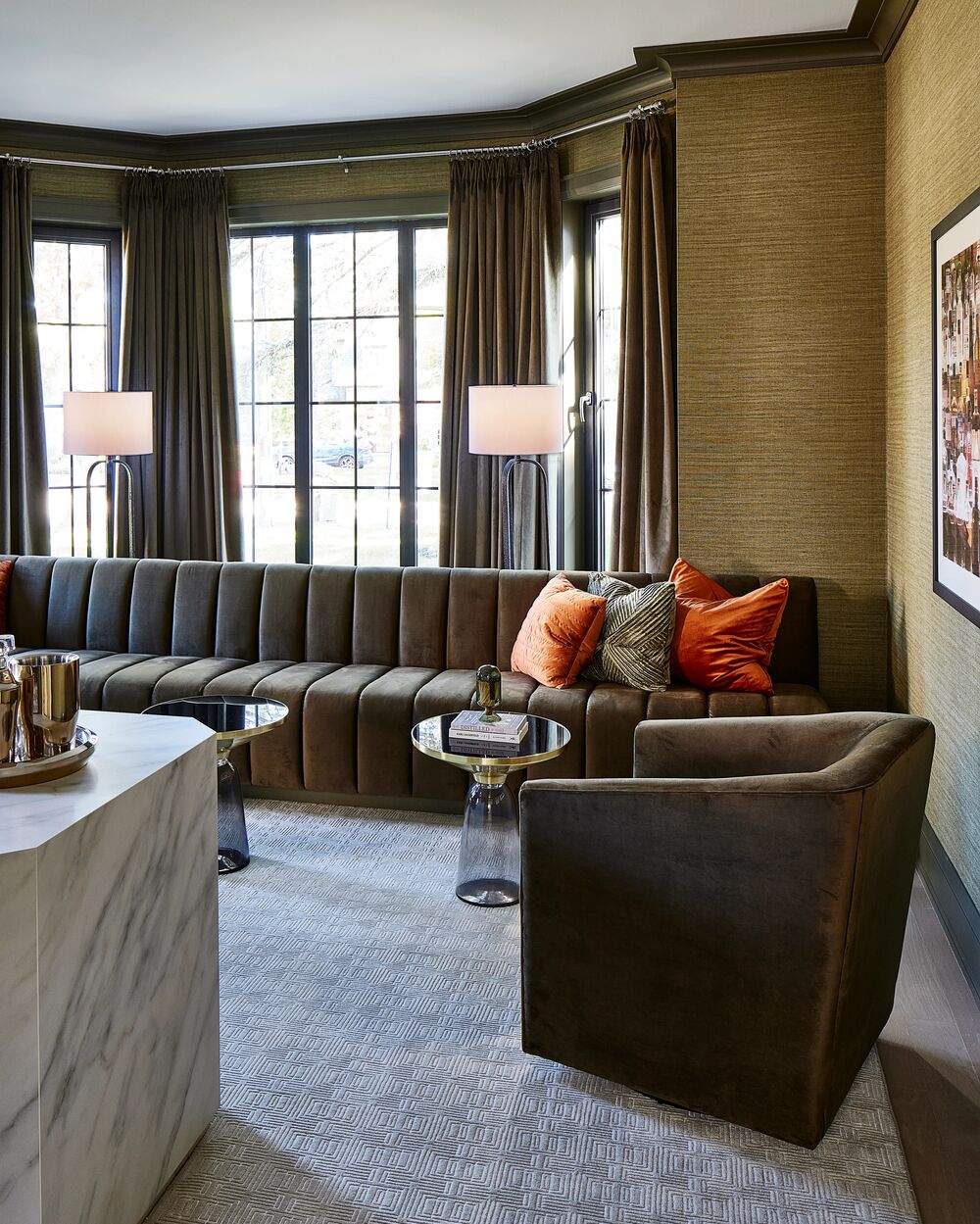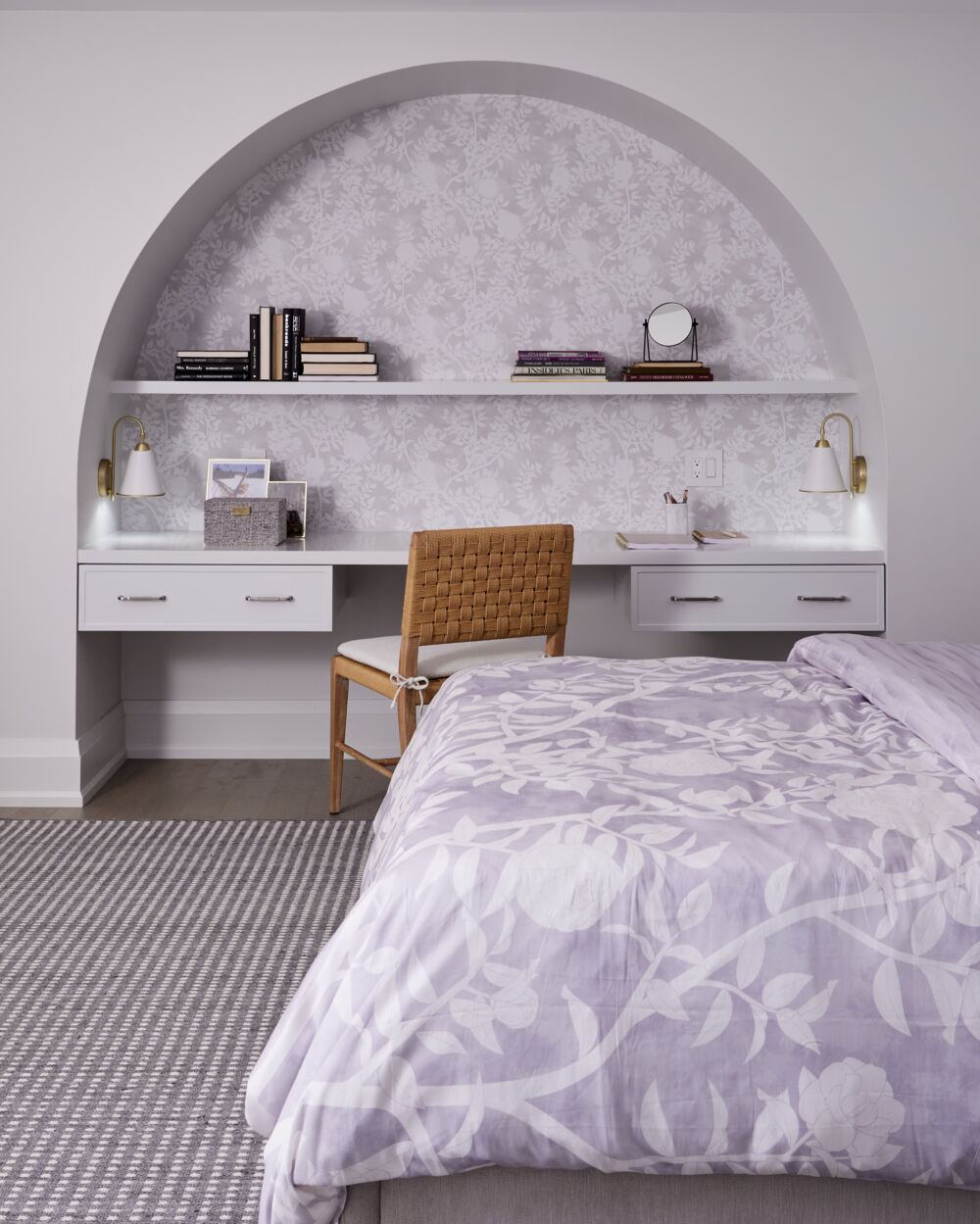
When it comes to transforming a room, few design tools are as powerful, or as affordable, as paint. Whether you’re planning a quick refresh or a full home makeover, making decisions around colour, finish, and placement can quickly become overwhelming. To simplify the process, interior designer Brian Gluckstein is answering the most common paint questions he receives. From colour selection to finish choices and testing techniques, this expert advice will help guide your next project with confidence.
Choosing the Right Colours
How do I choose the right white paint for an open-concept home?
This is probably the most common paint question I get. There are dozens of white options, and the best choice depends on the undertones already present in your space. If your furniture and finishes lean cool—with greys, blues, or black—go for a cool white to match. If your space is warmer, with wood tones, brass, or earthy hues, choose a warm white. Matching the undertone helps the space feel cohesive and calm.
How can I make a small room appear larger with paint?
Light colours reflect more light, which helps open up a space. Stick with whites, soft neutrals, or pale shades of your favourite hue. I often use a monochromatic scheme—walls, trim, and ceiling in variations of the same tone—to reduce visual contrast. Painting the trim in the same colour as the walls minimizes breaks in the space and makes the ceilings feel higher.
What’s a good colour for a dining room?
I love a rich, deep tone for dining rooms. Colours like navy, charcoal, or chocolate brown feel dramatic and intimate, especially under candlelight or a chandelier. That said, it should still relate to the rooms that connect to it. If your main floor is open concept, look for a colour that offers contrast without clashing.
What colour should I paint my trim?
One of my favourite modern approaches is painting the trim the same colour as the walls. It works beautifully in both saturated and neutral rooms and gives the space a more tailored, architectural look. When everything is unified, it feels fresh and sophisticated.

Paint vs. Wallpaper
Should I use paint or wallpaper for a particular room?
Paint is incredibly versatile, but wallpaper adds texture, depth, and personality. For rooms where you want a bit of drama—like a den, powder room, or dining room—wallpaper can instantly create atmosphere. I often use textured wallpapers like grasscloth or something with a subtle pattern to layer in visual interest.
How can I create a feature wall?
I like to keep it subtle but intentional. Try painting one wall in a darker tone from the same colour family, or use a patterned wallpaper to draw the eye. Whether you go bold or soft, the goal is to anchor the space and make it feel dynamic, not disconnected.

Choosing the Right Paint Finish
How do I choose the right paint finish for different rooms?
This is a frequent paint question, and for good reason—the finish affects both the look and function of the space. In high-traffic areas like kitchens and hallways, I suggest a satin finish. It’s washable and durable without too much shine. For living and dining rooms, eggshell is a good middle ground: soft but cleanable. Bedrooms and ceilings work well with matte finishes to help hide imperfections. For trim and doors, I usually go with semi-gloss for durability. And high-gloss can be stunning on a feature, but it needs a flawless surface and expert application.
What’s the best paint finish for a front door?
A high-gloss finish on a front door always makes an impact. It reflects light beautifully and brings out depth in strong colours like black, navy, or deep red. Plus, the glossy finish adds durability and is easy to wipe clean.
What paint finish should I use for kitchen cabinets?
For cabinets, satin or semi-gloss are the most forgiving. They’re easy to clean and hold up well. High gloss is striking, but it really shows every imperfection—so you’ll need to sand and apply with care. Satin gives you a clean, modern look without the intensity of shine.
Testing and Paint Colour Trends
How do I test paint colours before committing?
How do I test paint colours before committing?
Never skip this step. I recommend painting a few large swatches on different walls and observing them at different times of day. Lighting—natural and artificial—will affect how the colour appears. Try to look at the colour in both morning and evening light, and remember that finish will affect how a shade reads, too. I always tell people: live with the samples for a few days before deciding.
What are the current trends in interior paint colours?
We’re seeing a shift toward earthy and expressive colours. Shades like olive green, rust, warm browns, and terracotta are really popular right now, along with rich blues and deep neutrals. Colour drenching—where walls, trim, and ceiling are all painted the same tone—is a big trend that creates a cocooning effect. But soft neutrals like pale greys and warm whites remain timeless. When it comes to paint questions about trends, I always say: let them inspire you, but choose what works for your home and how you want to feel in the space.
From finding the right white to selecting the best finish for each room, Brian Gluckstein’s answers to your top paint questions offer practical, timeless guidance for projects big and small. Whether you’re updating a single room or designing an entire home, thoughtful choices in colour, finish, and application will help your space feel fresh, cohesive, and personal. Have more paint questions? Follow @glucksteinhome to submit your questions for the next Ask Brian feature.
Photography by A Plus Creative (1), Stacey Brandford (2, 3)